Over many decades of selection, many raspberry varieties have been bred. Some varieties have become the most favorite among gardeners. What species can be called the most productive, what is the difference in the care of raspberries? We learn together.
Material Content:
The most productive types and varieties of raspberries
By right, the first place in the ranking can be given to the raspberry remontant "Bryansk tree". This variety gives the first crop even in the year of planting.
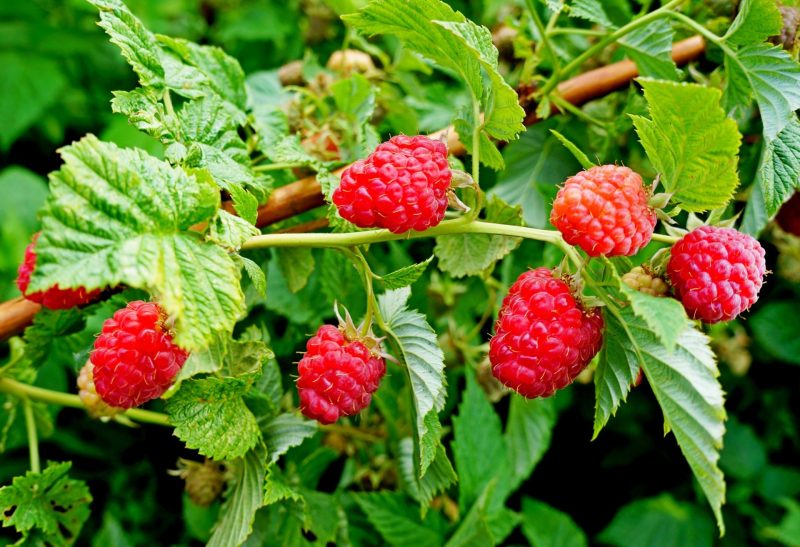
Raspberry tolerates temperature extremes, and is not afraid of drought. Berries Bryansk tree has a conical shape, large, red, bright colors. In addition, the Bryansk tree is not afraid of pests, so you will not be afraid of raspberry beetles or worms.
It is used by experienced gardeners and the Hercules variety. The variety has very large berries, the bushes are straight and strong, which do not bend even under the weight of the crop. The variety is resistant to infection by rot and is not afraid of fungi.
One of the golden varieties of raspberries is the Hussar. The variety was bred in Russia, characterized by unpretentiousness and high yields. Berries are well stored and tolerate transportation.
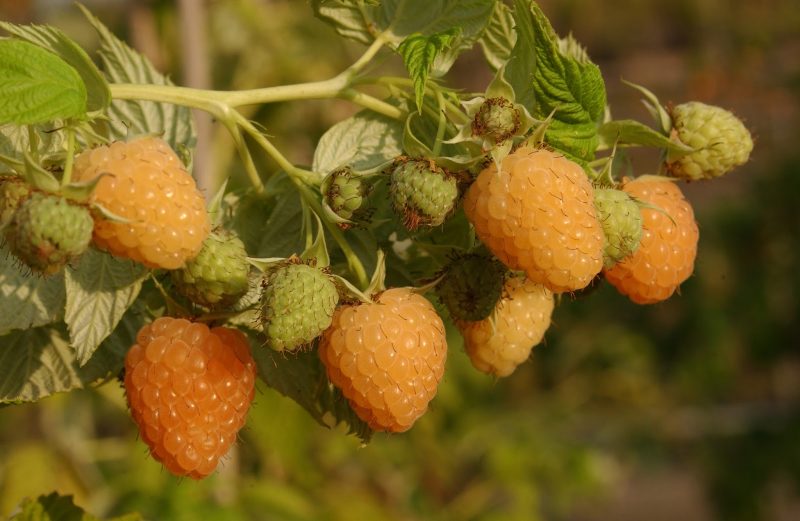
One of our gardeners' favorite varieties is the Yellow Giant. The bushes not only perfectly bear fruit, but also look very decorative. But the berries are not stored for long, and it is better to immediately eat or process them.
Grade "Giant" is suitable as well as summer residents. There are no thorns on the bushes, the berries taste like forest raspberries. The plant is unpretentious, tolerates cold snap. But over time, the berries without proper care will begin to fade.
Tips experienced gardeners on growing berries
With the first warm spring days, raspberry care begins on the site. It is imperative to cut out all dried and frozen shoots, as well as treat the bushes from pests. Raspberry shoots are tied in the spring. Especially in spring, the treatment of bushes with insecticides is important until the beginning of the formation of buds. Otherwise, insects can have time to lay larvae in flowers.
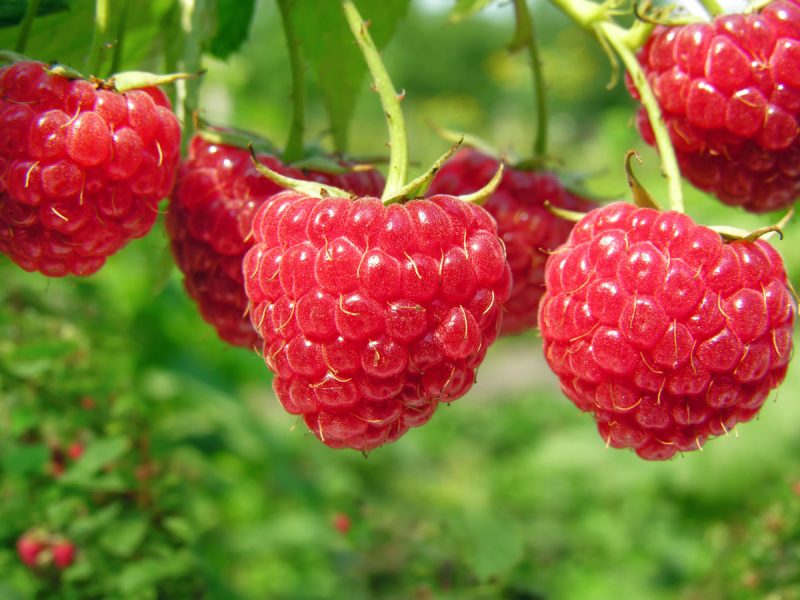
Also, care for raspberries in the spring includes the mandatory nutrition of plants. It is important to backfill nitrogen-containing top dressing in the soil in March. Fertilizer is scattered around the bushes and immediately dig up the soil.
While working in raspberries, many gardeners advise not to compact the soil too much. Raspberries do not like too dense soil, so be sure to dig them up and not crush them.
Many experienced summer residents, trying to keep the soil around raspberries all the time loose, sow green manure. This not only helps to improve the composition of the land, but also prevents the growth of weeds.
Planting raspberries in the open ground
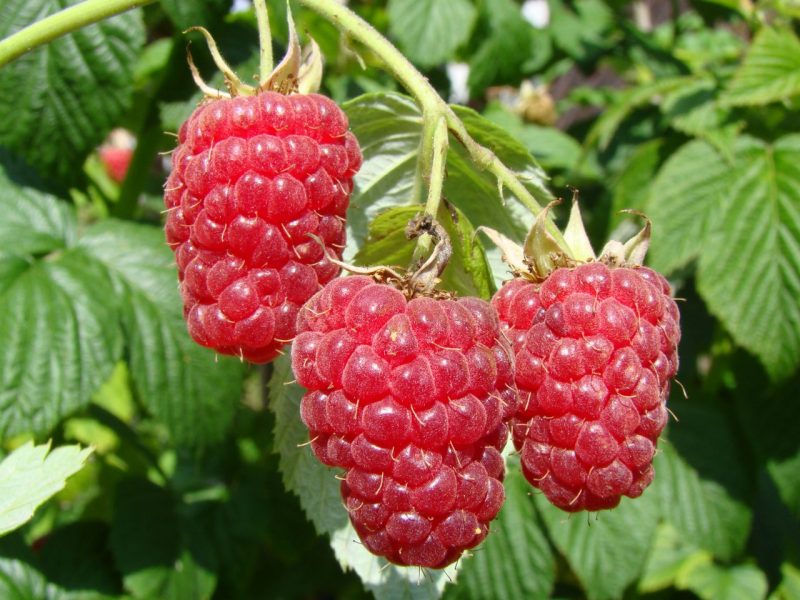
If you follow all the simple rules for planting raspberries in the open ground and properly care for it, then you can collect a rich harvest of fragrant berries.
Raspberry planting dates

It is very important to choose the right time for planting seedlings. You can do this in spring and autumn. The culture tolerates landing quite well, but nevertheless, the climatic features of the region should be guided in the first place.
Landing in different regions
In the southern regions, autumn is usually warm and long, so raspberries can be planted from September to October. Before frost, seedlings have time to take root.
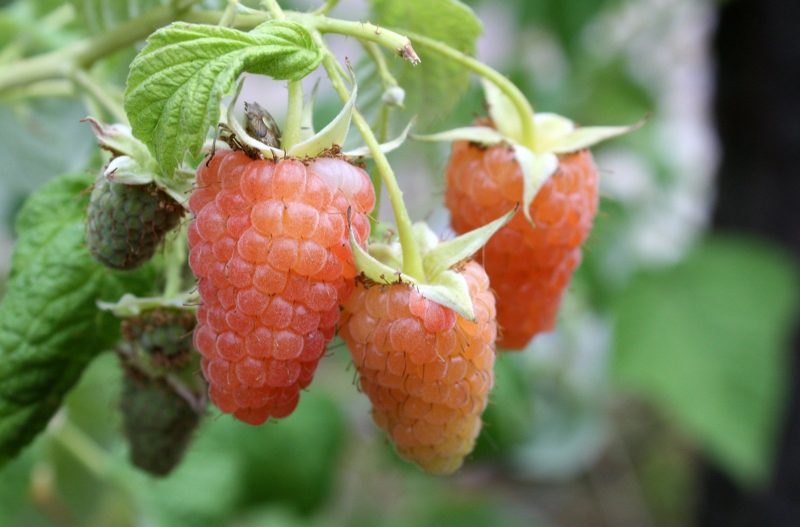
Keep in mind that autumn planting of raspberries is preferable, as it allows you to get the first crop from the bushes much earlier.
In the southern regions, it is not recommended to plant raspberries in the spring. In such areas, spring ends quickly and heat sets in, which raspberries tolerate very poorly. In addition, in the southern regions in the spring there may not be enough moisture in the soil, which slows down the rooting and growth of plants.
In temperate regions and in northern regions, everything happens the other way around. In such areas, spring planting of raspberries is preferable.
Preparation of soil and planting material
The place under the raspberry should be selected correctly. First of all, it should be a site protected from the north winds. Also, the place should be sunny, because in the shade raspberries will grow poorly.

If the planting will take place in the fall, then over a month and a half the site needs to be dug up and the rotted manure added at the rate of a bucket per square. Superphosphate is also added to the ground. If the soil is heavy, clay, then manure must be applied four buckets per square.
With spring planting, preparing the soil is easier. Immediately before planting, the fertile soil layer is mixed with manure. You can fill the pits for seedlings with such a mixture.
It is important not only to prepare a plot for raspberries, but also the seedlings themselves. Strong seedlings with a pair of shoots and well-developed roots are suitable for planting. Plant raspberries immediately after purchase. If this is not possible, then the roots of the seedlings are instilled into the damp ground in the shade or covered with a wet cloth.
How to plant raspberries
Correctly plant raspberries in rows, leaving 40 cm between plants, and in a row up to 60 cm. But you can plant 40 x 40 cm according to the pattern.
When planting a machine, the roots are not buried too much into the ground, because then the plants will slow down their growth. But if you plant the bushes too finely, they can dry out.
The top of each seedling should be cut into 2-3 pairs of leaves in order to reduce the evaporation of moisture. This will help plants to take root faster in a new place.
After planting, the seedlings are mulched to reduce moisture evaporation.
Raspberry care at different times of the year
Seasonal work in the raspberry should be considered in more detail, because the crop directly depends on proper care and cultivation.
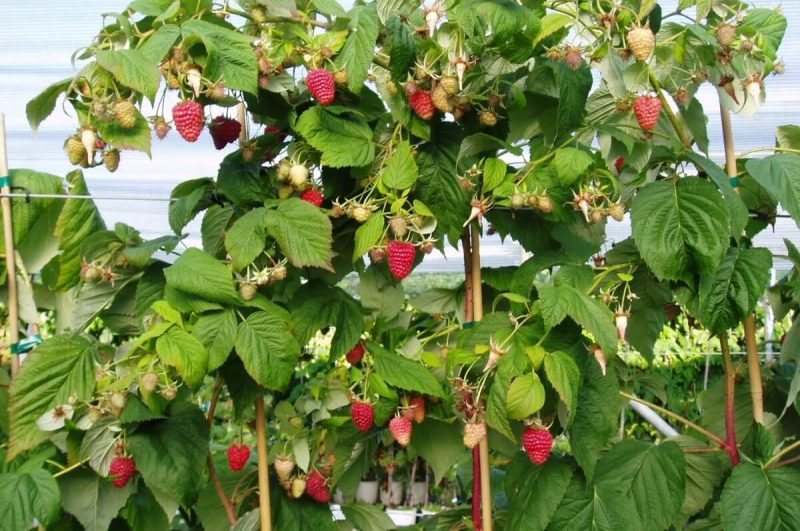
While the soil is still frozen in springtime, mineral fertilizers are applied under the bushes. Raspberry is a shrub that needs regular pruning in the spring. In April, all diseased and weak shoots are removed. Also in the spring, raspberries are treated with insecticides against pests.
How to water raspberries
In summer, the gardener's main task is to water raspberries on time. You can install drip irrigation, although many summer residents just throw a hose into the raspberry with a small pressure of water.
Raspberries are a culture that loves the sun and water. It is especially important to pour raspberries well during the flowering and ripening of berries.
After the first harvest, the raspberries are again well poured.
Fertilizing and fertilizers
Raspberry is a culture that is very responsive to fertilizer application. You can feed both organic and mineral fertilizers.
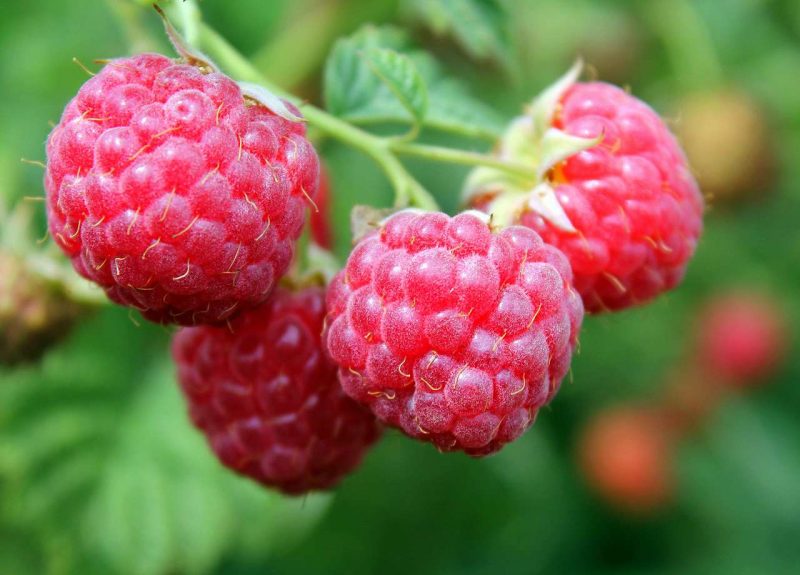
Experienced flower growers prepare an infusion of mowed grass. To do this, take 1 kg of grass and fill it with a bucket of grass. The infusion should ferment 10 days. After that, it is bred at the rate of 1 liter of infusion in a bucket of water and watered bushes.
Raspberries love top dressing such as manure and bird droppings. But here it is important to consider that the bird droppings are very saturated, and it must be bred at a rate of 1:20 with water.
From mineral top dressing under raspberries, potassium salts, phosphates and nitrogen fertilizers are added. To replace potassium salts, you can use ordinary wood ash. The ash is distributed on the ground at the rate of 150 g per square.
Of the finished preparations, raspberries can be fertilized with Kemira, Azofoskoy and Ekofoskoy.
Feeding raspberries with potassium chloride is strictly prohibited, since it negatively affects the development of the plant.
Soil care
The entire growing season for land in the raspberry should be looked after. Raspberries love loose soil, so the soil needs to be loosened, and it is advisable to do this after each watering.
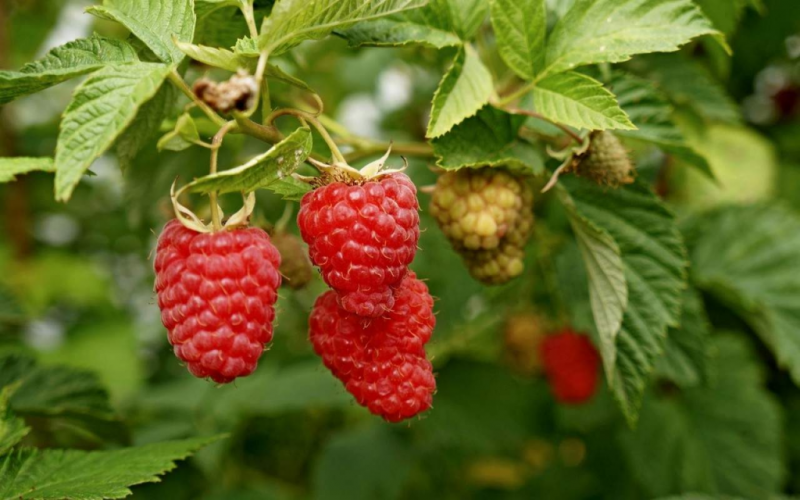
Simultaneously with loosening the soil, weeds are removed. The soil around the bushes after cultivation is mulched. As mulch, you can use sawdust or mowed lawn grass.
Dates and scheme of pruning bushes
Immediately after removing the shelter from the raspberry, in early spring, the bushes are cut. The main rule of pruning raspberries is to catch up to the awakening of sap flow on the shoots. The optimal period is the beginning of April. Proper pruning of raspberries increases fruiting.
To wake up the lateral buds of growth, a little later, in May, a second pruning is performed. To do this, cut off the top. So the side shoots will quickly start growing, and the yield will be higher.
Raspberry transplant
In addition to all procedures that are carried out in the spring, if necessary, a transplant is also performed. An important parameter is high-quality planting material. Rhizomes of seedlings should reach 15 cm, and the shoots should be healthy and strong.
When transplanting, they dig holes according to the scheme of 40 cm X 40 cm. The holes are filled with humus, and additionally rotted manure is added. It is important to transplant at the moment when the night temperature will not be below +5 degrees. The best time is the end of March - the beginning of April.
Breeding
It is easiest and quickest to propagate raspberries with green cuttings. This method is suitable for plant propagation in spring. For planting, choose green root offspring, which reached a height of 20 cm.

You should retreat from the bush by about 40 cm and dig a stalk. Siblings need to be transplanted together with a lump of earth so that they take root more quickly.
First, the selected offspring are planted on a separate bed, and then in the autumn they are transplanted to a permanent place in the raspberry.
Raspberries can be propagated on a personal plot with root cuttings. This method is especially suitable if raspberry bushes are sick. Propagation by root cuttings can be done in autumn and spring.
It is necessary to dig out the earth with a diameter of 40 cm around the bush and dig out the subordinate root. Dig carefully to maintain the integrity of the rhizome.All healthy roots that have reached a diameter of 2 mm are cut into pieces up to 10 cm in length. It is important that each piece has kidneys.
Rhizomes are planted in loose soil. You can even plant in a greenhouse in small grooves up to 10 cm deep. Cuttings are simply laid in the ground and sprinkled, spilled abundantly.
How to deal with pests and diseases
Raspberries are often attacked by many pests. Among them are strawberry weevils, raspberry beetles, raspberry moth and fly, gall midge. The main method for preventing the appearance of insects is the destruction of plant debris in autumn in raspberries.

The fight against insects is carried out with the help of Confidor, Karbofos, Fitoverm preparations. Diluted drugs according to the instructions.
Of the diseases, raspberries are often affected by powdery mildew, spotting, and anthracosis. When dark spots appear on the leaves, as well as a grayish coating, the bushes must be treated with Bordeaux liquid. Sick parts of plants are cut out, taken out to the site and burned.












